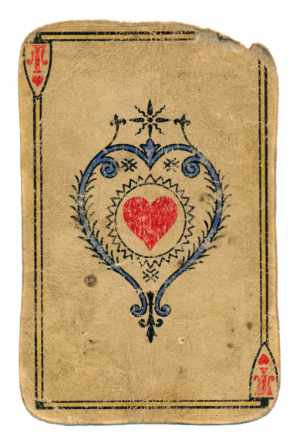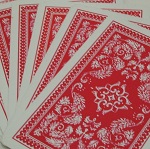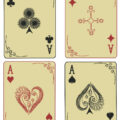Playing Cards and how to Care for them
Playing Cards are one of the great endurance stories of human civilization. Their simple origins are generally attributed to China about 1000 years ago, and continue to persist across the planet. The standard 52 card deck which includes the four ‘suits’ of Hearts, Spades, Diamonds and Clubs has been around for about 500 years and still we see movement to new variations in appearance and uses. Try our card-care hygiene and simple storage choices to ensure your favourite playing card deck survive the test of time.
Playing Card History
The playing card facts we find on the internet may be largely fiction, although we have their basic history nailed down. They emerged out of the mists of time in China around a thousand years ago during the Tang Dynasty. By the time of the Mameluke Empire in Egypt, the different pack types had merged into 48 cards in four, even-numbered suits. Each set of twelve had ten pip cards and two court cards branded with goblets, gold coins, swords, and polo-sticks.
European development in Playing Cards
The Europeans did not care for those symbols when the game turned up in Europe around 1360. One of the more curious playing card facts from those early days is they had no idea what polo was, and so they switched to suits of staves, swords, cups and coins that matched their warlike personality. You can still find these card types in use in parts of Italy and Spain.
How Hearts, Diamonds, Clubs, and Spades Became Entrenched
The Germans diverged into acorns, leaves, hearts, and bells, which symbols still appear on their various card types. However, the history of playing cards took a different turn in 1480, when the French decided they did not care for hand-painted decks. They decided to print them using stencils instead, but they needed simpler icons to make this work.
The French chose coeur (hearts), carreau (paving tiles), trefle (clovers), and pique (pike-heads) for their designs. However, the English beat their traditional enemies hands down, when they came up with their universal suits of hearts, clubs, diamonds and spades. Those are the only playing card facts in history of which we may be sure.
What are regular Playing Cards made from?
Early gamers made cards from paper, wood, and even stone in ancient times. However, makers had to innovate because it was hard for players to conceal their hands. Of course the process is completely mechanical nowadays, and overseen by artificially intelligent bots.
- The printing plates are prepared by applying photographic images
- These plates are attached to a rotating cylinder in a printing press
- Ink rollers coated with different coloured inks pass over the plates
- A sheet of paper or plastic passes through to receive the images
- A continuous process follows producing thousands of sheets per hour
Once dry, the sheets go to a second printing press to complete the other side. After applying a glossy lacquer, the bots send the sheets to precision cutting stations where after they are ready for packaging.
Plastic and Metal Playing Cards
Materials and production methods have enabled a new generation of Playing Cards over the last 50 years. 100% Plastic cards made from PVC or semi rigid plastic has transformed the durability of Playing Cards. Although more expensive than regular paper cards, for frequent card players have emerged as a cost effective alternative . Metal playing cards is another variation on the classic playing card. Often made from stainless steel or copper, these cards are not particularly practical from a playing viewpoint and expensive, but are a great talking point and are a great favorite amongst collectors.
How to Care For Playing Cards
I have a deck of cards that belonged to my Grandfather. Although he passed many decades ago, I love the idea that he handled them. He cared for them, and now I care for them. How will you care for the different types of Playing Cards, that you have in your hands?
Rules of Playing Card care:
The same rules apply across all cards.
- Invest in decent packs of cards
- Promise not to bend them.
- Wash your hands before you play
- Play cards on a clean, dry surface
- If playing at the beach or pool, use Waterproof, 100% Plastic Cards
- Store your cards in original box or invest in durable, sealed containers
- Avoid storage in humid environments
- Above all else, treat your cards with love.
Accessories that help to protect your Playing Cards
There are a few accessories that will help you protect your Playing Cards. Carry cases and boxes are ideal for traveling and holidays, while card holders will discourage bending and splitting during play.
Playing Cards have a long and rich history of development and use. In our era of high turnover and disposability, card players have the opportunity to preserve our generation of playing cards for future generations to enjoy and appreciate their magic.
Article reviewed and updated: March 20, 2024





